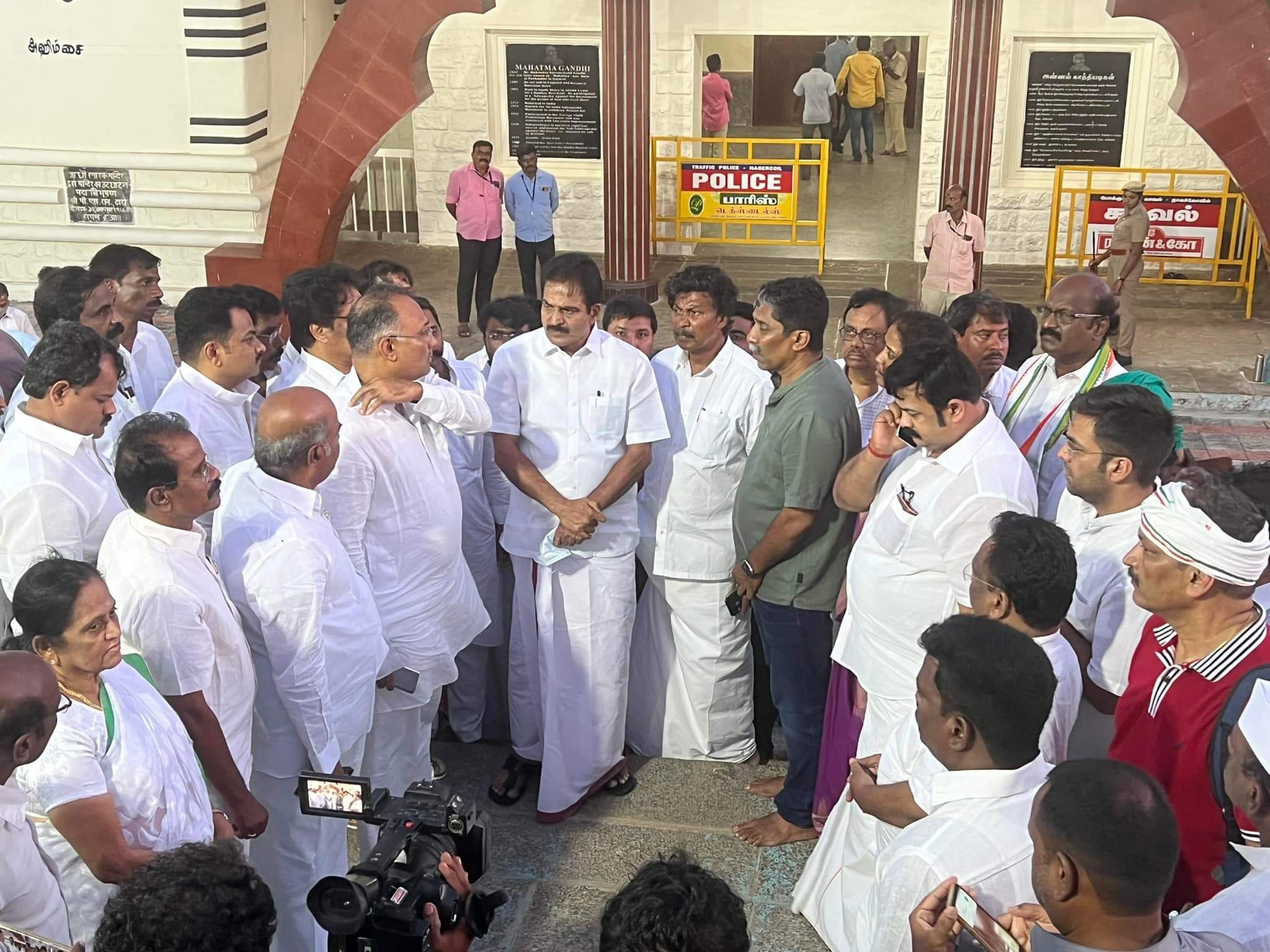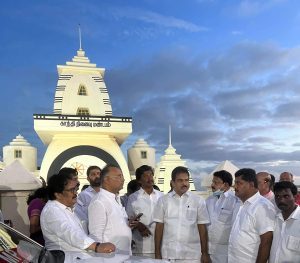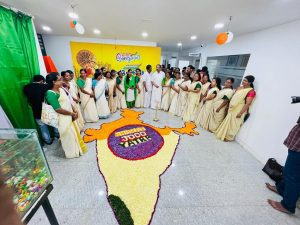India has seen many padayatras like the one by Rahul Gandhi. In fact, it is a pre-Independence Gandhian legacy that has worked time and again!

Congress leaders flocking Gandhi Mandapam in kanyakumari ahead of Bharat Jodo Yatra. Photo K B jayachandran
As Rahul Gandhi launches his keenly-awaited Bharat Jodo Yatra from the country’s southernmost tip, Kanyakumari, on Wednesday, 7 September, the intriguing question is: Does the padayatra — once an effective tool for large-scale political mobilisation — retain its potency in the age of social media?
Going by recent history, similar journeys helped several leaders — who faced organisational weaknesses and poor clout over the general public — create a space of their own and usurp power, riding the popular mandate brought in instantly by the foot journeys and the mass contacts they resulted in.
As with the Satyagraha, the padayatra is also a Gandhian legacy of the pre-Independence era.
When the Father of the Nation undertook the 388-km Dandi march in 1930 to violate the salt tax imposed by the British empire, it ushered in a new possibility for political mobilisation across the country.
While the Gandhi scion will walk 3,570 km between Kanyakumari and Kashmir accompanied by about 120 party workers — including 38 women, and covering 12 states and two Union territories — its outcome could well decide the relevance of such yatras.

AICC general secretary KC Venugopal and other Congress leaders at the Gandhi Mandapam in Kanyakumari ahead of Rahul Gandhi’s Yatra. (South First)
The Dandi march was a crucial phase in Mahatma Gandhi’s illustrious political career and the country’s freedom movement. It continued to inspire the country and evolved as a means of peaceful defiance against draconian tax proposals and laws.
As in the case of leaders engaged in such journeys so far, Rahul Gandhi is also expected to use the whole stretch of the Bharat Jodo Yatra to interact with different segments of the society directly, making them aware of the challenges ahead and expanding the mass base of the main Opposition party.
Between Mahatma Gandhi and Rahul Gandhi, the country has witnessed several short and long foot journeys undertaken by politicians to connect effectively with ordinary citizens.
On most occasions, the padayatras were undertaken by leaders in the Opposition benches to highlight the failures and “wrong” policies of the ruling entities.
But in the case of Rahul Gandhi, his early padayatras in Uttar Pradesh and Maharashtra — to extend solidarity with distressed farmers — evoked only marginal responses and failed to yield the desired results.
When Union Home Minister Amit Shah joined the BJP’s foot-march in West Bengal against the Mamata Banerjee government’s alleged repression of workers, his opponents said it was reduced to mere tokenism without causing any major embarrassment to the ruling Trinamool Congress. The yatra hit the streets for a few kilometres and ended.
The club of politicians who walked for more than 1,000 km — where Rahul Gandhi is aiming to be the latest entrant — is small.
On the other hand, many modified four-wheelers as modern chariots for yatras. BJP leaders LK Advani and Murli Manohar Joshi are prominent among them.
However, the pioneer of the hyped Rath Yatras was undivided Andhra Pradesh’s matinee idol-turned-powerful politician NT Rama Rao.

Women Congress workers in Kerala prepare special Bharat Jodo flower carpets to blend the yatra with the harvest festival Onam. (South First)
Prominent among those who walked by foot in political mobilisation yatras is former prime minister Chandrasekhar, who went on a march from Kanyakumari to Delhi in 1983, covering a distance of 4,260 km. He said he was conducting the yatra to understand the problems of the masses.
Film star-turned-Congress politician Sunil Dutt, former Madhya Pradesh chief minister Digvijaya Singh, former Andhra Pradesh chief minister YS Rajasekhara Reddy, current Andhra Pradesh Chief Minister YS Jagan Mohan Reddy, and former Andhra Pradesh chief minister N Chandrababu Naidu are other prominent figures who walked in yatras.
The list also includes M Karunanidhi and Vaiko from Tamil Nadu: They walked across the state. Meanwhile, Jayalalithaa and MK Stalin used specially-designed caravans for reach-out campaigns.
In Uttar Pradesh, Akhilesh Yadav of the Samajwadi Party catapulted himself into state politics by engaging in one such yatra.
In Kerala, leaders of both the LDF and the UDF travel by vehicles ahead of Assembly elections for political mobilisation.
When NT Rama Rao launched his 1982 yatra covering the length and breadth of erstwhile Andhra Pradesh atop his “Chaitanya Ratham”, it elicited much sarcasm from opponents. But he covered around 35,000 km by road and usurped power in the next Assembly election.
Advani’s Rath Yatra was held in September-October 1990 amidst the controversies surrounding the implementation of the Mandal Commission report and the BJP coming out in support of the Ram Temple movement.
Like Advani’s yatra, the subsequent yatra by Joshi incited communal clashes, riots, and hostility between communities.
When the then Opposition leader YS Rajasekhara Reddy walked for two months covering 1,500 km in the then undivided Andhra Pradesh in 2003, it became a massive success in turning public opinion against the neglect suffered by the farming community under the then N Chandrababu Naidu regime.
For politicians, who typically have a comfortable lifestyle, yatras are rigorous and require a lot of patience.
They have to brave harsh weather conditions apart from adjusting to the daily challenges related to routine.
But those who prefer it believe such mass contacts are more effective than social media networking.
Across the spectrum, there is one hope: Walk more and attain power.

Apr 29, 2024

Apr 29, 2024

Apr 29, 2024

Apr 29, 2024

Apr 29, 2024

Apr 29, 2024